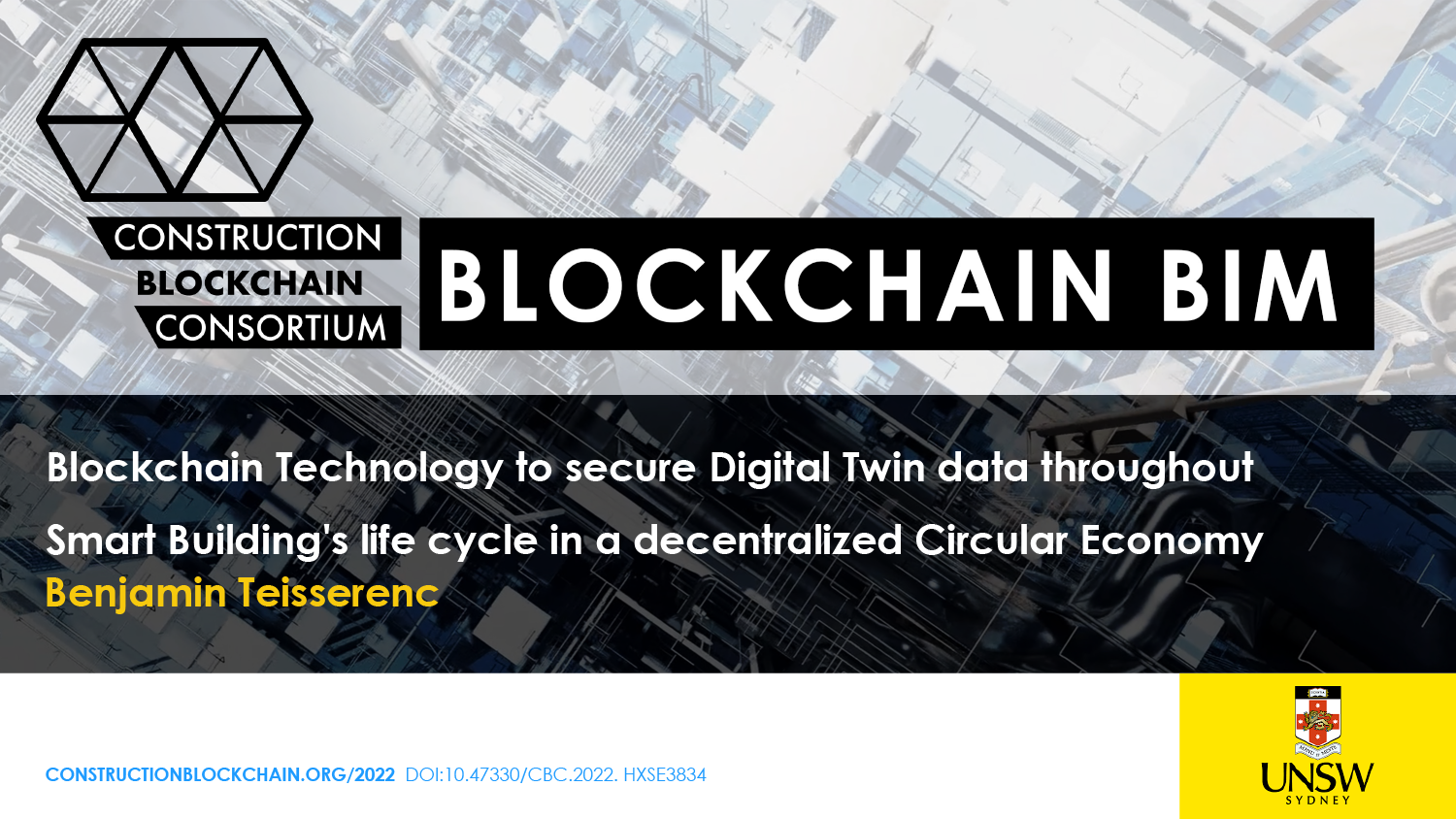Blockchain Technology to secure Digital Twin data throughout Smart Building's life cycle in a decentralized Circular Economy
Abstract
Blockchain technology (BCT) can be leveraged for digital twins (DT) to enhance data security, collaboration, efficiency, and sustainability in the construction industry (CI) 4.0. Benjamin Teisserenc research study was carried out through a MPhil at the University of New South Wales (UNSW) and aims to develop a novel technological framework and software architecture using BCT for DT throughout the lifecycle of smart building projects in the context of the circular economy (CE). The study identifies key challenges and technological factors affecting BCT adoption. It also identifies which project data types can benefit from BCT and the key factors and non-functional requirements (NFRs) necessary for the adoption of blockchain based digital twins (BCDT) in CI 4.0. The study finally proposes a software architecture and smart contract framework for BCDT decentralized applications (DApps) throughout the lifecycle of smart infrastructure projects. The study offers a technological framework – the decentralized digital twin cycle (DDTC) – with BCT to enhance trust, security, decentralization, efficiency, traceability, and transparency of information. The study found that the key data from the project lifecycle relevant for BCDTs relate to the BIM dimensions (3D, 4D, 5D, 6D, 7D, and 8D) and a novel contractual dimension (cD) is also proposed. Additionally, BCDT maturity Level 4 is proposed, leveraging BCT to enhance collaboration, process automation, and data sharing within a decentralized data value chain. The main NFRs for BCDTs are security, privacy, interoperability, data ownership, data integrity, and the decentralization and scalability of data storage. A five layered software architecture and a smart contracts framework using Non-Fungible Tokens (NFTs) are offered to address key industry use cases and their functional and non-functional requirements. The framework narrows the gaps identified around network governance, scalability, decentralization, interoperability, energy efficiency, computational requirements, and the integration of BCT with IoT, BIM, and DT. A cost analysis permitted developing criteria to evaluate the suitability of blockchain networks for BCDT applications in CI 4.0 based on key blockchain properties (security, decentralization, scalability, and interoperability). The study provides an industry-specific analysis and technological approach for BCDT adoption to address key challenges and improve sustainability for the CI 4.0. The findings provide key building blocks for industry practitioners to adopt and develop BCDT DApps further. The framework enables a paradigm shift towards decentralized ecosystems of united BCDTs where trust, collaboration, data sharing, information security, efficiency, and sustainability are improved throughout the lifecycle of smart infrastructure projects within a decentralized CE (DCE).

